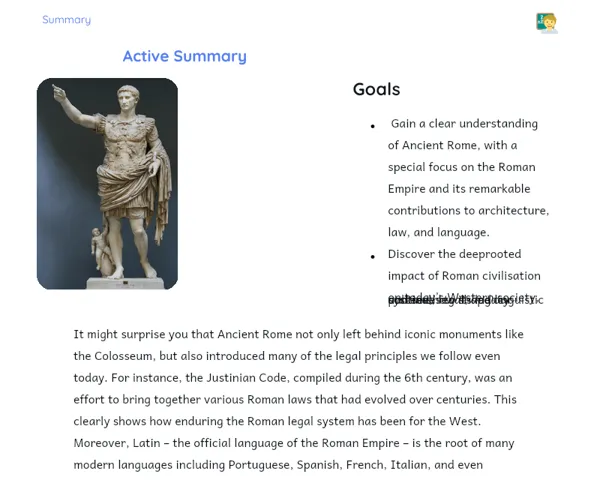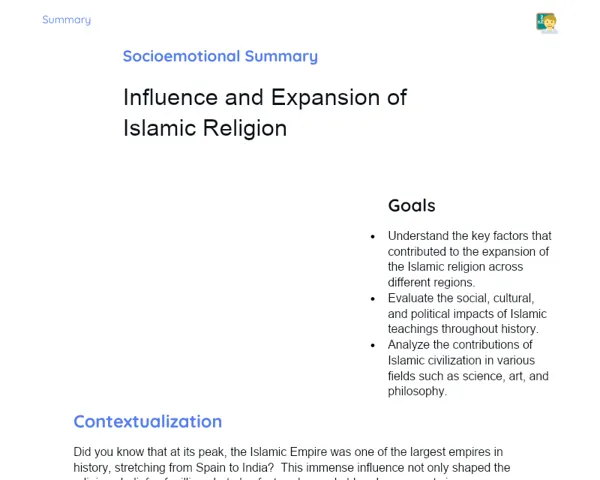Objectives
1. Recognise and discuss the key factors that led to the decline of the Western Roman Empire.
2. Analyse the consequences of splitting the Roman Empire into Eastern and Western halves.
3. Examine the onset of the Middle Ages and explore the role played by Christianity during this pivotal phase in European history.
Contextualization
Have you ever wondered that the decline of the Western Roman Empire was not an overnight event, but a gradual process spanning several decades? This period was marked by economic setbacks, societal strains, and military troubles. It all began in the 3rd century with what we now call the 'Crisis of the Third Century', which significantly weakened the Roman foundations and opened the door for barbarian invasions. These events not only redrew the political map of Europe but also brought about deep changes in its society and culture, laying the groundwork for the Middle Ages.
Important Topics
Crisis of the Third Century
The so-called 'Crisis of the Third Century' was a period of intense political, economic, and military instability that troubled the Roman Empire between 235 and 284 AD. This era was defined by repeated internal conflicts, barbarian invasions, and a breakdown in central authority, all of which seriously undermined the empire's structure and set the stage for its eventual division and collapse.
-
Repeated civil wars among various contenders for the throne considerably eroded central authority and strained the empire’s resources.
-
Barbarian invasions, especially in the later stages, stretched Roman border defences to their limits, challenging the empire’s capacity to protect its territories.
-
The economic downturn, characterised by inflation and the devaluation of currency, disrupted effective governance and weakened internal unity.
Division of the Roman Empire
In 285 AD, Emperor Diocletian opted to split the Roman Empire into two parts—Western and Eastern—in an effort to manage its vast territories more effectively amidst growing challenges. The Eastern part, with Constantinople (today's Istanbul) as its capital, became the administrative and military hub, while the Western section, centred in Rome, continued to grapple with barbarian invasions and internal crises.
-
The split was intended to improve administrative efficiency and defence, allowing for more localised and focused management.
-
Despite having Rome as its historic capital, the Western Roman Empire still struggled with severe challenges arising from barbarian incursions and internal turmoil.
-
The Eastern part, which later evolved into the Byzantine Empire, managed to survive for over a thousand years after the collapse of the West, preserving much of Roman culture, art, and legal traditions.
Rise of Christianity
During the 3rd and 4th centuries, Christianity experienced significant growth across the Roman Empire, emerging as both a cultural and religious force that challenged traditional Roman customs. This expansion stirred internal conflicts but also offered many Romans a moral compass and an organised community during these turbulent times, thereby influencing the empire’s political and social fabric.
-
In times of crisis, Christianity provided a supportive network and sense of community, which resonated with many Romans disillusioned by the old gods.
-
Although there were periods of harsh persecution, the enforcement was inconsistent, allowing Christianity to steadily gain followers.
-
The conversion of Emperor Constantine to Christianity and the subsequent issuance of the Edict of Milan—which endorsed religious tolerance—marked a turning point in the relationship between Christianity and the state.
Key Terms
-
Crisis of the Third Century: A phase of instability within the Roman Empire from 235 to 284 AD, marked by internal strife, barbarian attacks, and economic upheaval.
-
Division of the Roman Empire: In 285 AD, Emperor Diocletian split the empire into two distinct parts—the Western Roman Empire, with Rome as its capital, and the Eastern Roman Empire, with Constantinople at the helm.
-
Christianity: A monotheistic faith based on the teachings of Jesus Christ, which increasingly influenced the Roman Empire, particularly from the 3rd century onward.
For Reflection
-
How did the Crisis of the Third Century affect the empire’s capacity to counter barbarian incursions?
-
In what ways did splitting the empire into Eastern and Western parts influence the eventual downfall of the Western Roman Empire?
-
What role did Christianity play during the Crisis of the Third Century and in the subsequent fragmentation of the empire?
Important Conclusions
-
We examined the dramatic decline of the Western Roman Empire—a process driven by economic, social, and military challenges such as the Crisis of the Third Century and barbarian invasions.
-
We discussed how the division of the Roman Empire into Eastern and Western segments impacted each side’s ability to handle internal and external pressures.
-
We analysed the rise of Christianity and its significant role as a unifying moral force during these turbulent times, marked notably by Emperor Constantine's conversion and the Edict of Milan.
To Exercise Knowledge
Imagine you are a Roman citizen during the Crisis of the Third Century. Write a diary entry describing the economic pressures, cultural changes, and political uncertainties you encountered. Be sure to include accurate historical details to deepen your understanding of that period.
Challenge
Empire Map Challenge: Use an online interactive map to trace how the borders of the Roman Empire shifted before and after its division. Identify key cities, trade routes, and regions occupied by barbarian groups. Compare these changes visually and write a short paragraph discussing the significance of these territorial shifts.
Study Tips
-
Utilise visual aids like maps and timelines to better grasp the historical events and processes. This makes it easier to remember and contextualise the information.
-
Join online forums or study groups to discuss the topic with your peers. Such discussions often provide new perspectives and deeper insights.
-
Relate past events to the present by considering how they continue to influence modern society and politics, which can make your study more engaging and relevant.



